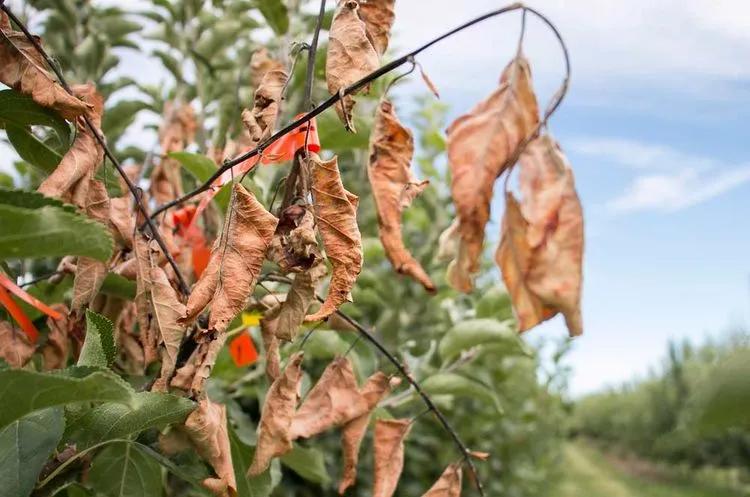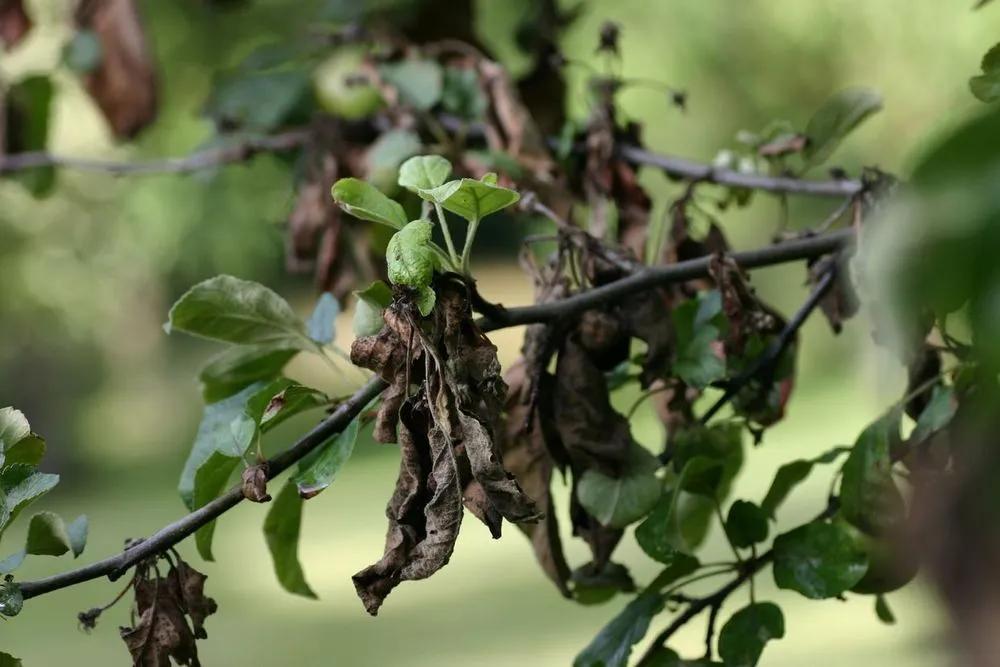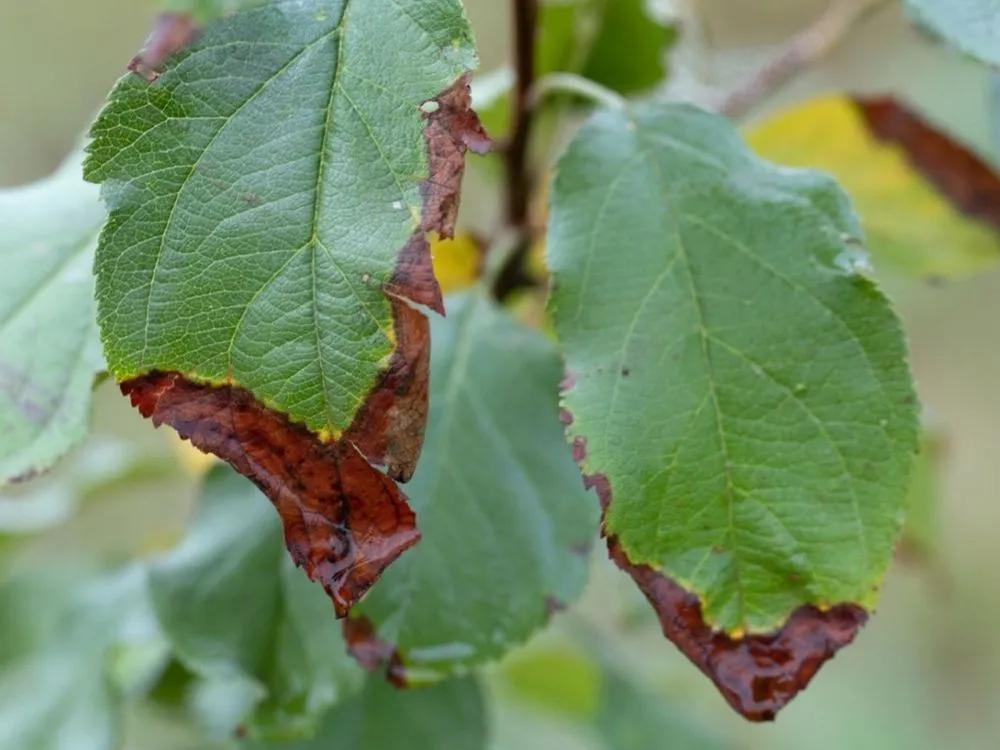Fire Blight is caused by the bacterium Erwinia amylovora and is believed to be native to North America, and then spread across the world, except Australia, where it doesn't seem to be present.
Fire blight gets its name due to the scorched look it gives plants. This bacteria spreads between cells and across tissue, darkening and killing everything on its way, and it's a highly contagious disease. It tends to affect ornamental plants and agricultural crops, mainly fruit-bearing trees such as apples and raspberries, but pears are the ones most susceptible to it. In optimal conditions, fire blight can decimate entire orchards, and it can also affect species in the Rosaceae family.
Fire Blight Treatment



Signs of damage
All symptoms are typically easy to identify and above ground.
1. Sudden darkening. The bacteria will darken tissue and kill it while spreading.
2. Water soaking. Blossoms become dull, and petals will start to fall. This will eventually happen to branches as well.
3. Withering look. Blossoms, fruits, leaves, and other above-the-ground parts of the plant begin to die.
4. The dark spots begin to get sharp and cracked margins.
How to prevent
Fire blight is difficult to control and thrives in warm and moist environments, so maintaining watering practices updated and according to the necessary can prevent spreading. This bacterium becomes less active during colder seasons, making it a good opportunity to start preventing and removing all damaged surfaces.
If the bacteria is destroyed before entering the plats tissues, there's a higher chance of stopping it because as soon as it enters the plant, external methods become purposeless.
Heal
The first step is to remove infected wood should be removed, preferably in late summer, fall or winter.
Copper blossom spray is also known to help, applied when plants begin to blossom, although it can damage fruits. This has been proven to slow down or temporarily stop the disease from spreading, but it doesn't fully kill the bacteria.
Go Premium to continue reading
Also you’ll get unlimited access to disease identification and all the other beneficial features
More problems
